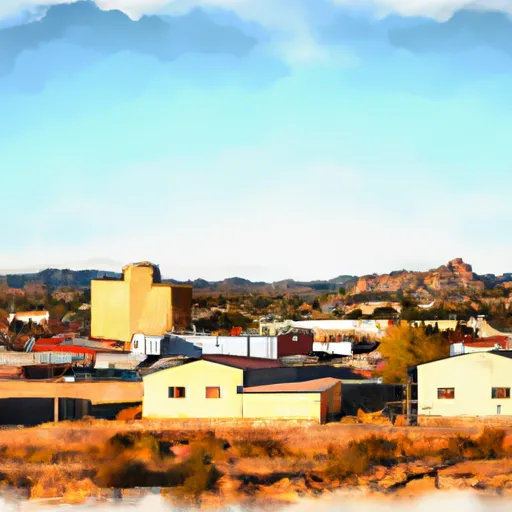-
 Snoflo Premium
Snoflo Premium
Get unlimited access to all our content
With no Ad interruptions! - Start Your Free Trial Login with existing account
Sanders
Eden Index
Climate
8.9
•
Recreation
•
Community
0.6
•
Safeguard
3.7/10

Sanders is a small town located in northeastern Arizona, known for its unique climate and stunning outdoor recreational opportunities. The region experiences a semi-arid desert climate, characterized by hot summers and mild winters. Summers are typically dry and can be quite hot, with temperatures often exceeding 100°F (37°C). Winters are mild, with temperatures averaging around 50°F (10°C).
The hydrology constituents in Sanders are primarily influenced by the Little Colorado River, which flows nearby. The river plays a vital role in supporting the local ecosystem and providing water resources for the community. Additionally, there are several small creeks and washes in the area, contributing to the hydrology of the region.
Outdoor enthusiasts will find plenty of recreational opportunities in Sanders. The region boasts picturesque landscapes, including canyons, mesas, and vast desert expanses. Hiking and backpacking enthusiasts can explore the nearby Petrified Forest National Park and Canyon de Chelly National Monument, offering breathtaking views and ancient ruins. Wildlife enthusiasts can spot various species, including elk, deer, and numerous bird species. Additionally, Sanders is an excellent location for stargazing due to its low light pollution levels.
Overall, Sanders, Arizona, offers a unique climate, beautiful hydrology constituents, and diverse outdoor recreation opportunities for nature lovers and adventure seekers.
What is the Eden Index?
The Snoflo Eden Index serves as a comprehensive rating system for regions, evaluating their desirability through a holistic assessment of climate health, outdoor recreation opportunities, and natural disaster risk, acknowledging the profound impact of these factors on livability and well-being.
Climate Health Indicator (CHI): 8.9
Sanders receives approximately
285mm of rain per year,
with humidity levels near 69%
and air temperatures averaging around
11°C.
Sanders has a plant hardyness factor of
6, meaning
plants and agriculture in this region thrive during a short period during spring and early summer. Most
plants will die off during the colder winter months.
By considering the ideal temperature range, reliable water supplies, clean air, and stable seasonal rain or snowpacks, the Climate Health Indicator (CHI) underscores the significance of a healthy climate as the foundation for quality living.
A healthy climate is paramount for ensuring a high quality of life and livability in a region, fostering both physical well-being and environmental harmony. This can be characterized by ideal temperatures, reliable access to water supplies, clean air, and consistent seasonal rain or snowpacks.
Weather Forecast
Streamflow Conditions
Little Colorado
Area Rivers
Little Colorado
Snowpack Depths
Little Colorado
Reservoir Storage Capacity
Little Colorado
Groundwater Levels
Recreational Opportunity Index (ROI):
The Recreational Opportunity Index (ROI) recognizes the value of outdoor recreational options, such as parks, hiking trails, camping sites, and fishing spots, while acknowledging that climate plays a pivotal role in ensuring the comfort and consistency of these experiences.
Access to outdoor recreational opportunities, encompassing activities such as parks, hiking, camping, and fishing, is crucial for overall well-being, and the climate plays a pivotal role in enabling and enhancing these experiences, ensuring that individuals can engage in nature-based activities comfortably and consistently.
Catastrophe Safeguard Index (CSI):
The Catastrophe Safeguard Index (CSI) recognizes that natural disaster risk, encompassing floods, fires, hurricanes, and tornadoes, can drastically affect safety and the overall appeal of an area.
The level of natural disaster risk in a region significantly affects safety and the overall livability, with climate change amplifying these risks by potentially increasing the frequency and intensity of events like floods, fires, hurricanes, and tornadoes, thereby posing substantial challenges to community resilience and well-being.
Community Resilience Indicator (CRI): 0.6
The Community Resilience Indicator (CRI) recognizes that education, healthcare, and socioeconomics are crucial to the well-being of a region. The CRI acknowledges the profound impact of these elements on residents' overall quality of life. By evaluating educational resources, healthcare accessibility, and economic inclusivity, the index captures the essential aspects that contribute to a thriving community, fostering resident satisfaction, equity, and social cohesion.

